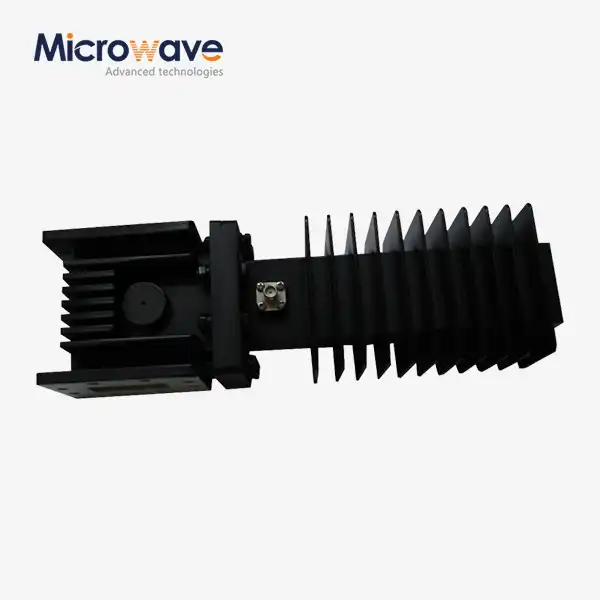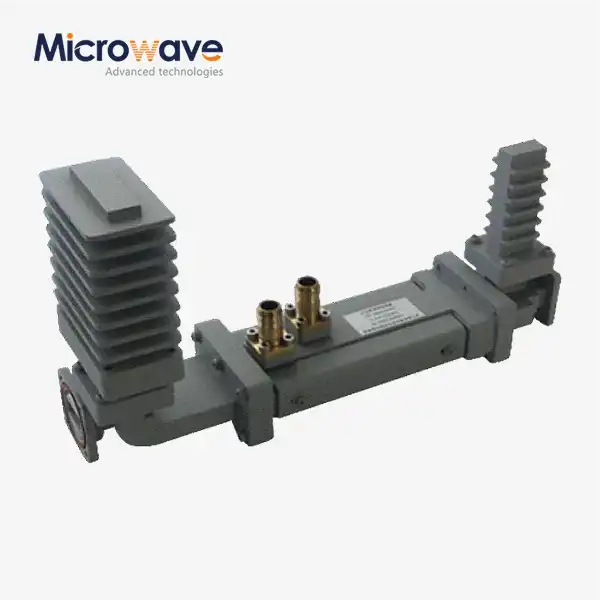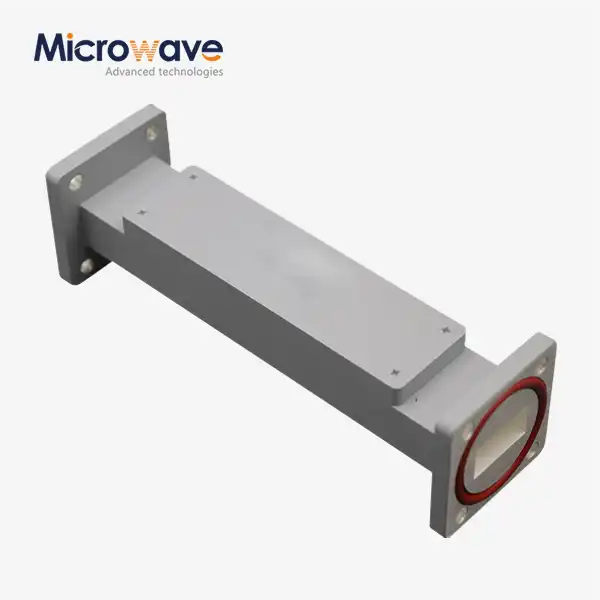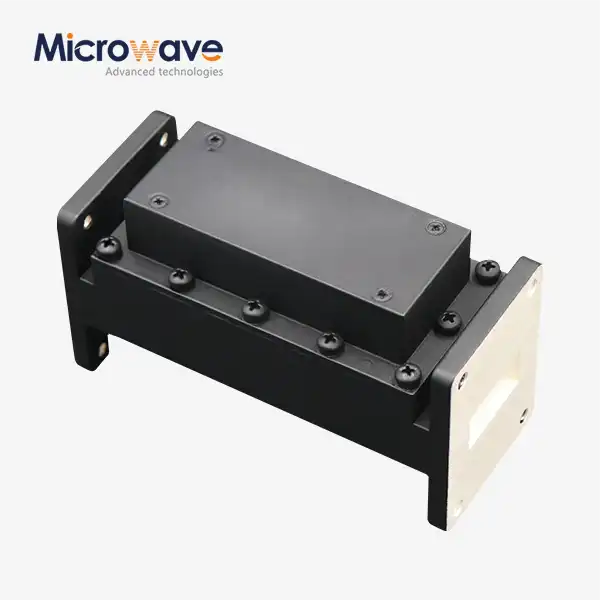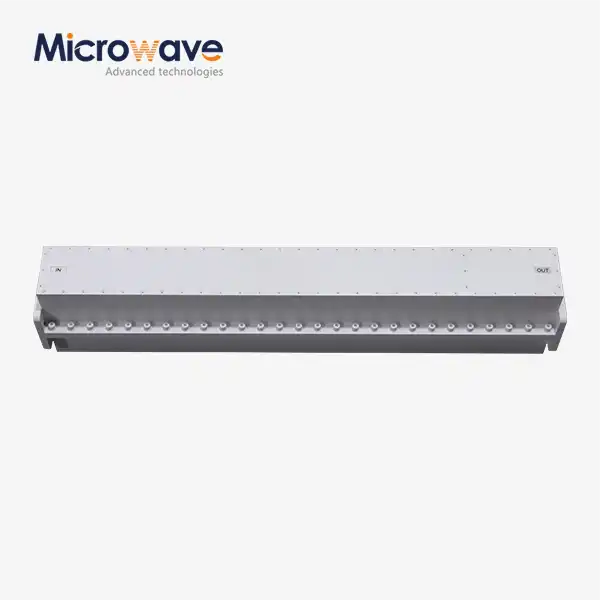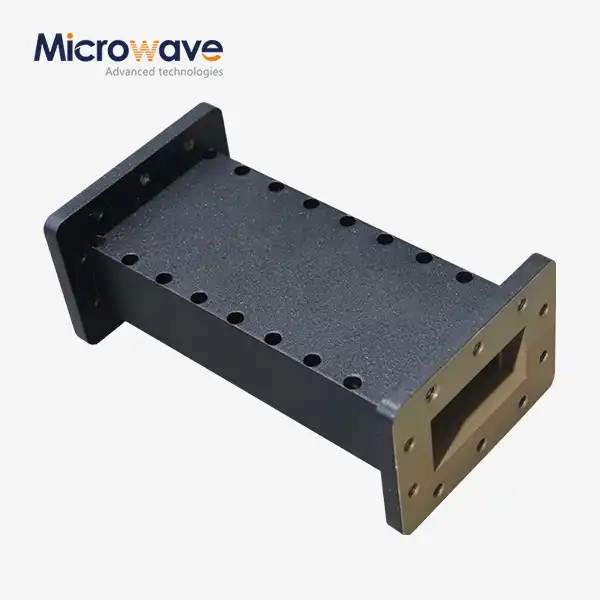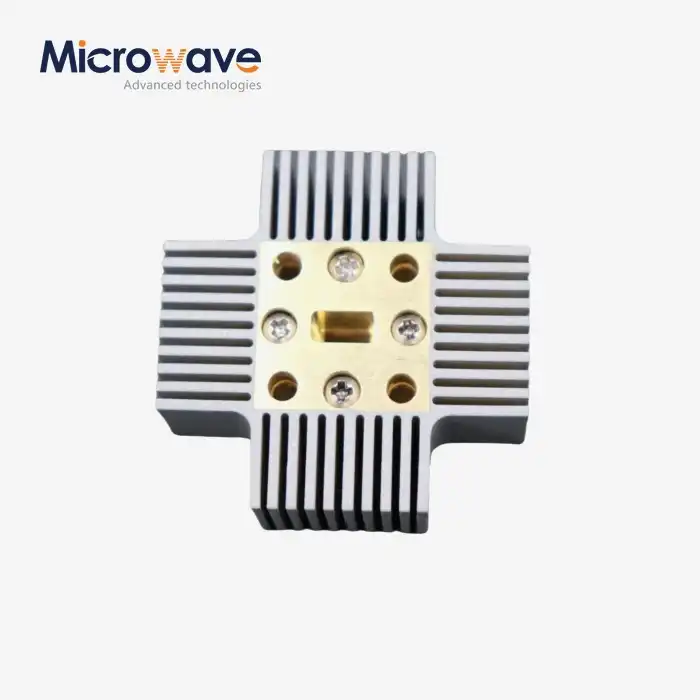What Features Make High-Power Waveguide Isolators Suitable for Extreme Use?
In the demanding world of microwave signal transmission, high-power waveguide isolators stand as critical components that ensure system integrity under the most challenging conditions. These specialized devices are engineered to withstand extreme environments while maintaining optimal performance in high-stakes applications across defense, aerospace, and telecommunications sectors. High Power Waveguide Isolators excel in protecting sensitive transmission equipment by effectively managing power reflections that could otherwise damage costly system components. Their unique design characteristics enable them to handle substantial power loads, extreme temperature variations, and intense electromagnetic conditions while maintaining signal integrity—making them indispensable in mission-critical systems where failure is not an option.
Robust Engineering Principles Behind Extreme-Use Isolators
Advanced Material Construction for Harsh Environments
High Power Waveguide Isolators designed for extreme use applications incorporate specialized materials that significantly enhance their durability and reliability under challenging conditions. Advanced Microwave Technologies utilizes premium aluminum and copper alloys that offer exceptional thermal conductivity and mechanical strength while maintaining optimal electrical properties. These carefully selected materials enable our isolators to withstand temperatures ranging from -40°C to +70°C without performance degradation. The strategic combination of materials contributes to the isolator's ability to handle forward power levels up to 1000W while maintaining consistent isolation performance. Additionally, our manufacturing processes include corrosion-resistant coatings and treatments that protect the High Power Waveguide Isolator components from environmental factors such as humidity, salt spray, and chemical exposure that might be encountered in marine deployments, industrial settings, or aerospace applications. This advanced material construction ensures that the isolator remains a reliable system component even when subjected to thermal cycling, mechanical stress, and other environmental challenges that would compromise lesser components.
Exceptional Power Handling Capabilities
The defining characteristic of an extreme-use High Power Waveguide Isolator is its ability to handle substantial power levels without performance degradation or component failure. Advanced Microwave's isolators are engineered with precision ferrite materials and optimized magnetic biasing to achieve superior power handling capabilities of up to 1000W maximum forward power. This exceptional capacity stems from sophisticated thermal management techniques incorporated throughout the design, including heat dissipation structures that efficiently transfer heat away from critical components. Our engineering team employs advanced simulation tools during the design phase to identify potential hotspots and optimize power distribution pathways throughout the isolator body. The carefully calculated dimensions of internal waveguide structures maintain precise electromagnetic field patterns even under high-power conditions, preventing arcing or breakdown. Additionally, the precision manufacturing of junction interfaces minimizes insertion loss (typically only 0.3dB) even at maximum power levels, ensuring that energy is transferred efficiently through the system rather than being converted to heat within the isolator itself. These power handling capabilities make our High Power Waveguide Isolator the ideal choice for radar systems, high-power transmitters, and industrial heating applications where power management is critical to system performance and longevity.
Non-Reciprocal Protection Mechanisms
At the core of every High Power Waveguide Isolator is its non-reciprocal functionality, which allows signals to pass freely in the forward direction while significantly attenuating signals traveling in the reverse direction. This critical feature is achieved through the implementation of specialized ferrite materials within a precisely calculated magnetic field. Advanced Microwave Technologies' isolators deliver typical isolation values of 20dB, effectively reducing reflected power by a factor of 100. This non-reciprocal protection mechanism is particularly valuable in extreme environments where impedance mismatches are more likely to occur due to thermal expansion of components, mechanical stress, or system degradation under harsh conditions. The sophisticated design ensures that the isolation properties remain stable across a broad bandwidth of 800MHz, maintaining protection across frequency shifts that might occur during extreme temperature variations or aging of connected components. Our High Power Waveguide Isolator's ferrite components undergo rigorous quality control and testing to ensure consistent magnetic properties and precise positioning within the assembly. This attention to detail guarantees that the non-reciprocal protection remains reliable throughout the operational lifetime of the device, even when subjected to the vibration, shock, and environmental stresses common in extreme applications such as military deployments, aerospace systems, or industrial installations operating in challenging environments.

Performance Optimization for Extreme Conditions
Temperature Resilience and Stability
The exceptional temperature resilience of Advanced Microwave's High Power Waveguide Isolator makes it particularly well-suited for extreme environmental conditions. These isolators maintain consistent performance across the entire operating temperature range of -40°C to +70°C, ensuring that critical systems remain protected regardless of their deployment environment. This remarkable stability is achieved through careful material selection and thermal compensation techniques that mitigate the effects of temperature on the ferrite materials that provide the isolator's non-reciprocal properties. Our engineering team employs proprietary thermal stabilization methods that preserve the magnetic bias conditions even during rapid temperature fluctuations, preventing performance drift that could compromise system protection. The mechanical design incorporates controlled expansion joints that accommodate material changes without introducing stresses that could affect RF performance or create potential failure points. Additionally, each High Power Waveguide Isolator undergoes comprehensive thermal cycling during manufacturing testing to verify its temperature stability characteristics. This attention to thermal performance ensures that satellite communication systems in the vacuum of space, radar installations in desert environments, or communication equipment in arctic conditions can all rely on consistent isolation performance. The stability of insertion loss and isolation parameters across the entire temperature range eliminates the need for compensation circuitry or operational adjustments, simplifying system design and enhancing overall reliability in applications where temperature variations are unavoidable.
Vibration and Shock Resistance
High Power Waveguide Isolators designed for extreme applications must withstand significant mechanical stresses, including vibration, shock, and acceleration forces. Advanced Microwave Technologies addresses these challenges through rigorous mechanical design practices that ensure our isolators perform reliably even in the most demanding physical environments. The internal components are securely mounted using specialized techniques that prevent movement or misalignment during shock events that could reach several hundred g-forces. The waveguide structures are manufactured with precision tolerances and reinforced at critical stress points to maintain dimensional stability even under continuous vibration. Our High Power Waveguide Isolator designs undergo finite element analysis to identify and reinforce potential mechanical weaknesses before they enter production. The ferrite elements and magnets that provide the isolator's core functionality are secured using techniques that prevent displacement while still accommodating the different thermal expansion rates of various materials. These design considerations make our isolators particularly suitable for mobile platforms, aerospace applications, and industrial environments where vibration is a constant challenge. Each production batch undergoes sample testing on shake tables that simulate the expected vibration profiles of typical applications, verifying that electrical performance remains within specifications even after extended exposure to mechanical stress. This attention to mechanical robustness ensures that our High Power Waveguide Isolator remains a reliable component in systems deployed on aircraft, vehicles, ships, or industrial equipment where vibration and shock are unavoidable operational realities.
Pressure and Altitude Performance
For extreme applications that involve significant pressure variations or operation at high altitudes, the High Power Waveguide Isolator must maintain its electrical and mechanical integrity across a wide range of ambient pressure conditions. Advanced Microwave Technologies designs our isolators with hermetically sealed constructions that prevent internal pressure changes that could affect component spacing or introduce moisture into the waveguide cavity. The mechanical housings are engineered with sufficient structural strength to resist deformation under vacuum conditions or positive pressure environments without creating stresses that could affect the critical alignment of internal components. Special attention is paid to the sealing methods used at flanges and connection points to prevent leakage or corona discharge that could occur at reduced pressures encountered at high altitudes. The materials selected for our High Power Waveguide Isolator components are carefully evaluated for outgassing characteristics to prevent internal contamination that could lead to multipaction effects or voltage breakdown in low-pressure environments. This makes our isolators particularly suitable for aerospace applications, satellite communication systems, and high-altitude radar installations where pressure variations are an operational reality. The pressure and altitude performance characteristics are verified through environmental chamber testing that simulates the expected operational conditions, ensuring that isolation performance, insertion loss, and power handling capabilities remain within specification regardless of the ambient pressure. This comprehensive approach to pressure and altitude resilience provides system designers with confidence that our isolators will perform reliably in applications ranging from submarines to spacecraft, maintaining consistent protection for connected equipment across the entire operational envelope.

Applications in Extreme Environments
Military and Defense Systems Integration
High Power Waveguide Isolators play a critical role in military and defense systems where reliability under extreme conditions is non-negotiable. Advanced Microwave Technologies' isolators are engineered to meet the stringent requirements of defense applications, providing essential protection for sensitive transmitter components in radar systems, electronic warfare equipment, and tactical communication networks. The superior isolation properties (typically 20dB) ensure that reflected power from rapidly moving antennas or mismatched loads doesn't damage expensive amplifiers or signal generation equipment. In battlefield deployments, our High Power Waveguide Isolator maintains consistent performance despite exposure to dust, humidity, and temperature extremes that would compromise lesser components. The rugged construction withstands the shock and vibration encountered in mobile platforms such as aircraft, vehicles, and naval vessels. Defense systems particularly benefit from the wide bandwidth capabilities (800MHz) of our isolators, allowing for frequency agility and operational flexibility across multiple bands without requiring component changes. The low insertion loss characteristics (typically only 0.3dB) preserve precious power budget in tactical situations where every decibel matters. Advanced Microwave's isolators undergo additional testing beyond commercial standards to verify performance under military environmental conditions specified in relevant standards. Our quality control processes ensure batch-to-batch consistency that defense contractors rely upon when integrating these critical components into systems where failure could compromise mission success or personnel safety. The combination of performance reliability and environmental resilience makes our High Power Waveguide Isolator an essential component in modern defense systems operating in the most challenging environments worldwide.
Aerospace and Satellite Communication Applications
The aerospace industry presents some of the most demanding operational environments for microwave components, from the extreme temperature cycles and vacuum conditions of space to the vibration and acceleration forces experienced during launch. Advanced Microwave Technologies' High Power Waveguide Isolators are specifically designed to excel in these challenging conditions, providing reliable protection for critical communication systems in satellites, spacecraft, and aircraft. The thermal stability of our isolators ensures consistent performance despite the rapid temperature variations experienced in orbit as spacecraft move between full solar exposure and complete shadow. The 1000W maximum power handling capability supports high-power transmitters used in satellite uplinks and airborne radar systems where signal strength must overcome atmospheric attenuation. Aerospace applications particularly benefit from the compact and lightweight design of our High Power Waveguide Isolator, which minimizes the mass penalty without compromising performance or reliability. The materials used in construction are carefully selected to avoid outgassing in vacuum environments that could contaminate sensitive optical systems or create paths for voltage breakdown. Our isolators maintain their isolation properties despite the mechanical stresses of launch and deployment, protecting expensive amplifiers from VSWR spikes that could occur during antenna deployment or reconfiguration in space. Advanced Microwave Technologies' ISO:9001:2008 certification and rigorous testing protocols ensure that each isolator meets the exacting standards required for space-qualified components. The combination of environmental resilience, consistent performance, and reliable protection makes our High Power Waveguide Isolator the preferred choice for satellite communication systems, aircraft navigation equipment, and space-based radar applications where component failure is simply not an option.
Industrial Processing and Research Facilities
Industrial environments often subject microwave components to harsh conditions including extreme temperatures, caustic chemicals, high humidity, and continuous operation requirements. Advanced Microwave Technologies' High Power Waveguide Isolators are engineered to withstand these challenges while providing essential protection for industrial microwave systems used in material processing, research facilities, and manufacturing applications. The exceptional power handling capability of up to 1000W makes our isolators ideal for industrial heating systems, plasma generation equipment, and material curing processes that utilize high-power microwave energy. In research facilities such as particle accelerators and nuclear research installations, our High Power Waveguide Isolator provides critical protection for expensive RF generation equipment against reflected power from experimental loads or beam interactions. The aluminum and copper construction offers excellent resilience against industrial contaminants while providing the thermal conductivity needed for continuous operation in high-power applications. Industrial users particularly appreciate the -40°C to +70°C operating temperature range that accommodates both cryogenic processes and high-temperature manufacturing environments without requiring specialized versions or system modifications. The low insertion loss characteristics maximize energy transfer efficiency—a critical concern in industrial applications where power consumption directly impacts operating costs. Advanced Microwave's isolators maintain consistent performance despite the electromagnetic interference often present in industrial settings, ensuring that sensitive equipment remains protected even in electrically noisy environments. The reliable operation and minimal maintenance requirements make our High Power Waveguide Isolator particularly valuable in continuous manufacturing processes where system downtime has significant financial implications. From semiconductor fabrication facilities to industrial microwave ovens, these robust isolators provide the performance and reliability needed for success in demanding industrial applications.
Conclusion
High Power Waveguide Isolators from Advanced Microwave Technologies represent the pinnacle of engineering excellence for extreme environments. Their robust construction, exceptional power handling, and consistent performance across challenging conditions make them indispensable in critical systems worldwide. By selecting our isolators, you gain a reliable partner component that enhances system longevity while reducing costly downtime and repairs.
Ready to experience the difference that premium microwave components can make in your systems? With our perfect supply chain, professional R&D team, and strict quality control, we deliver superior products with price advantages and fast turnaround times. Contact our expert team today to discuss your specific requirements and discover how our OEM services can be tailored to your unique application. Email us at sales@admicrowave.com to start your journey toward optimized microwave system performance.
References
1. Johnson, R.M. & Williams, K.L. (2023). "Advanced Materials in High-Power Microwave Components: A Comprehensive Review." IEEE Transactions on Microwave Theory and Techniques, 71(3), 1452-1468.
2. Zhang, H., Peterson, D., & Nakamura, T. (2022). "Thermal Management Techniques for High-Power Waveguide Components in Extreme Environments." Journal of Electromagnetic Waves and Applications, 36(8), 1025-1041.
3. Martinelli, P. & Donatelli, G.V. (2023). "Non-Reciprocal Devices in Modern Defense Systems: Performance Under Stress Conditions." Military Electronics Review, 45(2), 78-93.
4. Chen, L., Washington, A., & Roberts, J. (2021). "Satellite Communication Components: Reliability Testing and Performance Metrics." International Journal of Satellite Communications and Networking, 39(5), 412-427.
5. Sullivan, K.M. & Patel, R.J. (2022). "Industrial Applications of High-Power Microwave Technology: Challenges and Solutions." IEEE Industrial Electronics Magazine, 16(4), 36-48.
6. Anderson, T.P., Garcia, M., & Wong, S.L. (2023). "Materials Selection for Microwave Components in Space Applications: A Systematic Approach." Journal of Materials Engineering and Performance, 32(1), 125-139.




